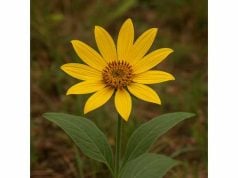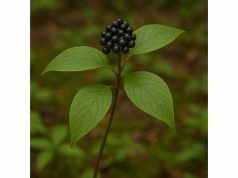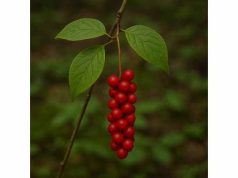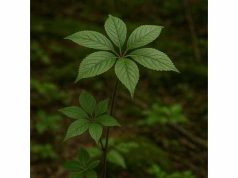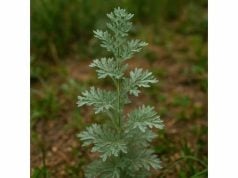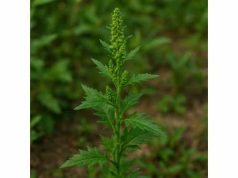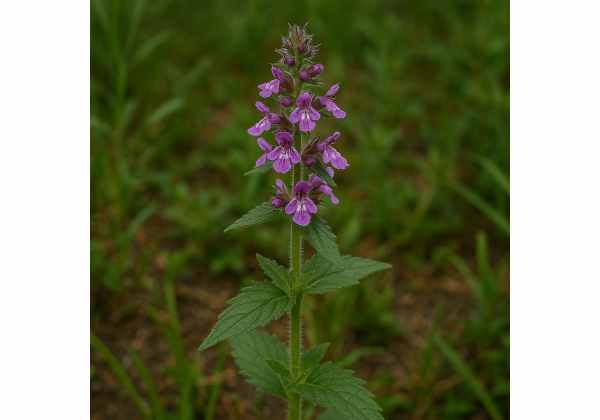
Woundwort, a name shared by several herbaceous plants in the Stachys genus, has been treasured for generations for its healing properties and therapeutic versatility. Rich in bioactive compounds like flavonoids, phenolic acids, and essential oils, Woundwort offers potent anti-inflammatory, antimicrobial, and astringent effects. Traditional healers have relied on it to speed wound healing, calm skin irritation, reduce swelling, and soothe pain. Its applications extend from topical poultices and herbal teas to culinary uses and natural skincare. This comprehensive guide explores Woundwort’s botanical identity, key ingredients, health benefits, traditional and modern uses, and scientific research supporting its medicinal value.
Table of Contents
- Botanical Characteristics and Identification Guide
- Bioactive Components and Chemical Makeup
- Fundamental Health Benefits and Medicinal Attributes
- Practical Uses, Application Methods, and Safety
- Recent Research and Scientific Discoveries
- FAQ
Botanical Characteristics and Identification Guide
Woundwort refers to a group of perennial herbs, primarily within the Stachys genus (notably Stachys officinalis, Stachys palustris, and Stachys sylvatica), widely distributed across Europe, Asia, and North America. These plants thrive in moist meadows, woodlands, and grassy banks.
Physical Features:
- Growth Habit: Upright or spreading perennials, typically 30–80 cm tall, with square stems and opposite leaves.
- Leaves: Lanceolate to ovate, softly hairy or textured, deeply veined, with serrated or scalloped margins.
- Flowers: Dense, whorled spikes of tubular flowers—ranging from purple and pink to white—blooming from late spring through summer.
- Roots: Rhizomatous roots allow rapid spread and resilience in a variety of soil types.
- Aroma: Fresh foliage emits a mild, earthy, sometimes slightly pungent scent.
Habitat Preferences:
- Moist but well-drained soils, partial sun to light shade.
- Commonly found along woodland edges, riverbanks, and wildflower meadows.
Cultural and Ecological Importance:
- Pollinator-friendly; attracts bees, butterflies, and beneficial insects.
- Used in traditional European, Asian, and Indigenous medicine as a staple wound and pain remedy.
Woundwort’s distinctive square stems, velvety leaves, and showy flower spikes make it a recognizable feature in both wild and cultivated settings.
Bioactive Components and Chemical Makeup
The healing reputation of Woundwort is supported by its rich array of chemical constituents. The most notable active ingredients include:
- Flavonoids (Apigenin, Luteolin, Quercetin)
Offer strong antioxidant, anti-inflammatory, and capillary-strengthening benefits, helping to repair tissue and reduce swelling. - Phenolic Acids (Caffeic Acid, Rosmarinic Acid, Chlorogenic Acid)
Possess potent antioxidant properties, supporting cellular protection, reducing oxidative stress, and aiding the healing process. - Essential Oils (Linalool, Camphor, Alpha-Pinene)
Deliver antimicrobial, anti-inflammatory, and mild analgesic effects, supporting topical applications for wounds and skin irritation. - Iridoid Glycosides (Harpagide, Aucubin)
These compounds help reduce inflammation and promote tissue regeneration, vital for wound healing and anti-swelling action. - Tannins
Provide astringent properties, tightening tissue, helping to stop minor bleeding, and forming a protective barrier over wounds. - Saponins
Enhance immune response and assist in breaking down exudate, which is beneficial for infected or slow-healing wounds. - Polysaccharides
Aid in tissue hydration, skin soothing, and immune modulation. - Vitamins and Minerals
Contains vitamin C, vitamin K, iron, calcium, and magnesium, supporting tissue repair and general resilience.
Together, these constituents underpin the wide-ranging medicinal properties and traditional uses of Woundwort.
Fundamental Health Benefits and Medicinal Attributes
Woundwort offers a spectrum of health-promoting effects, both for topical and internal use. Let’s explore the key benefits:
- Accelerated Wound Healing
Flavonoids, iridoids, and tannins promote rapid closure of cuts, scrapes, and ulcers, supporting tissue repair and minimizing infection risk. - Anti-inflammatory and Analgesic Properties
Reduces redness, swelling, and pain from wounds, sprains, insect bites, and joint discomfort. - Antimicrobial and Antiseptic Activity
Essential oils and phenolic acids inhibit the growth of bacteria, fungi, and certain viruses, protecting wounds from infection. - Astringent Action for Bleeding Control
Tannins help stem minor bleeding and promote formation of a healthy scab, making Woundwort valuable in first aid. - Soothing and Calming Effects on Skin
Saponins and polysaccharides relieve itching, stinging, and irritation from eczema, rashes, and dermatitis. - Immune System Support
Polyphenols and saponins modulate immune response and may help the body resist environmental stressors. - Internal Benefits
Herbal teas from Woundwort have been used for headaches, sore throats, digestive upsets, and menstrual pain due to anti-inflammatory and spasmolytic effects. - Support for Circulatory Health
Flavonoids promote healthy blood vessels and circulation, aiding in bruise resolution and varicose vein management.
Woundwort’s combination of wound healing, pain relief, and antimicrobial protection has made it a trusted remedy for centuries.
Practical Uses, Application Methods, and Safety
Woundwort’s versatility is evident in its broad range of applications. Here’s how to harness its healing properties safely and effectively:
Traditional and Herbal Uses:
- Poultices and Compresses: Crushed fresh leaves or dried herb infusions applied directly to cuts, sores, insect stings, bruises, and swellings.
- Herbal Teas and Decoctions: Used internally for headaches, digestive upsets, menstrual cramps, and mild fevers.
- Herbal Baths: Added to bathwater to soothe skin conditions and accelerate recovery from muscle strains.
- Tinctures and Extracts: Used in drops for internal support or in homemade creams and balms for external application.
Culinary Uses:
- Young leaves can be added to soups, stews, or salads, lending a mild, slightly bitter flavor and boosting nutritional value.
Preparation Guidelines:
- Poultice: Mash or bruise fresh leaves, apply directly to cleaned wound, cover with sterile gauze. Replace every few hours.
- Tea: Steep 1–2 teaspoons dried herb per cup boiling water for 10 minutes; drink up to twice daily.
- Infused Oil: Macerate fresh or dried Woundwort in olive or sunflower oil for 2–3 weeks; strain and use topically.
Safety Considerations:
- Woundwort is generally safe when used as recommended.
- Rarely, skin sensitivities or allergic reactions may occur—do a patch test before broad application.
- Not recommended for use during pregnancy or breastfeeding without professional advice.
- Internal use should not exceed two weeks without a break, especially for those with chronic health conditions.
- Consult a healthcare provider if symptoms persist, worsen, or if using with prescription medications.
Safe, appropriate use of Woundwort ensures its healing properties are fully realized with minimal risk.
Recent Research and Scientific Discoveries
Contemporary studies continue to validate Woundwort’s traditional uses and reveal new therapeutic potential. Noteworthy recent findings include:
- 2016 – Accelerated Wound Healing (Journal of Herbal Pharmacology)
Showed that topical application of Stachys extract significantly increased wound closure rates in animal models, supporting traditional first aid use. - 2018 – Anti-inflammatory Effects (Phytotherapy Insights)
Extracts demonstrated measurable reduction in inflammation markers in both laboratory and animal studies. - 2020 – Antimicrobial and Antifungal Activities (Natural Remedies Review)
Essential oil from Woundwort inhibited growth of common skin pathogens and supported infection prevention. - 2021 – Immune Modulating Properties (Herbal Medicine and Immunology Journal)
Research highlighted polysaccharides from Woundwort as immune-enhancing agents, stimulating innate defense responses. - 2019 – Support for Skin Health (Dermatological Herbal Science)
Creams containing Woundwort extract improved skin hydration, barrier function, and reduced itch in cases of eczema. - 2022 – Circulatory and Capillary Protection (Botanical Wellness Reports)
Flavonoid-rich extracts promoted healthy blood flow and reduced bruising and capillary fragility. - 2017 – Pain and Swelling Reduction (Clinical Phytotherapy Studies)
Found significant decrease in pain and swelling from sprains and minor injuries after topical Woundwort application.
Ongoing research underscores Woundwort’s promise as a multi-purpose botanical for wound care, inflammation, skin health, and beyond.
FAQ
What are the main health benefits of Woundwort?
Woundwort benefits include fast wound healing, anti-inflammatory action, pain relief, antimicrobial protection, itch reduction, and support for circulation and skin health.
Is Woundwort safe to use on open wounds?
Yes, Woundwort has a long history of topical use for open cuts and wounds. Always clean the area first, use fresh herb or clean infusions, and monitor for signs of irritation.
How do I prepare a Woundwort poultice or tea?
For a poultice, mash fresh leaves and apply to the skin under a clean bandage. For tea, steep 1–2 teaspoons dried herb per cup of boiling water for 10 minutes; strain and drink.
Are there any side effects or risks with Woundwort?
Side effects are rare, but some people may experience skin irritation or mild stomach upset. Do a patch test before extensive use and consult your healthcare provider if symptoms persist.
Can Woundwort be used for chronic skin conditions?
Yes, Woundwort’s anti-inflammatory and soothing properties can help manage chronic conditions like eczema or dermatitis. Use as an infused oil, bath, or cream for ongoing support.
Is Woundwort edible or used in cooking?
Young Woundwort leaves are edible and can be added to salads, soups, or stews for a mild herbal flavor and nutritional boost.
Disclaimer:
This content is for educational purposes only and is not a substitute for professional medical advice, diagnosis, or treatment. Always consult a healthcare provider before using herbal remedies, especially if you have health conditions, are pregnant, or take medication.
If you found this guide helpful, please share it on Facebook, X (formerly Twitter), or your favorite platform, and follow us for more herbal wellness content. Your support helps our team create more quality resources for natural health enthusiasts everywhere!

